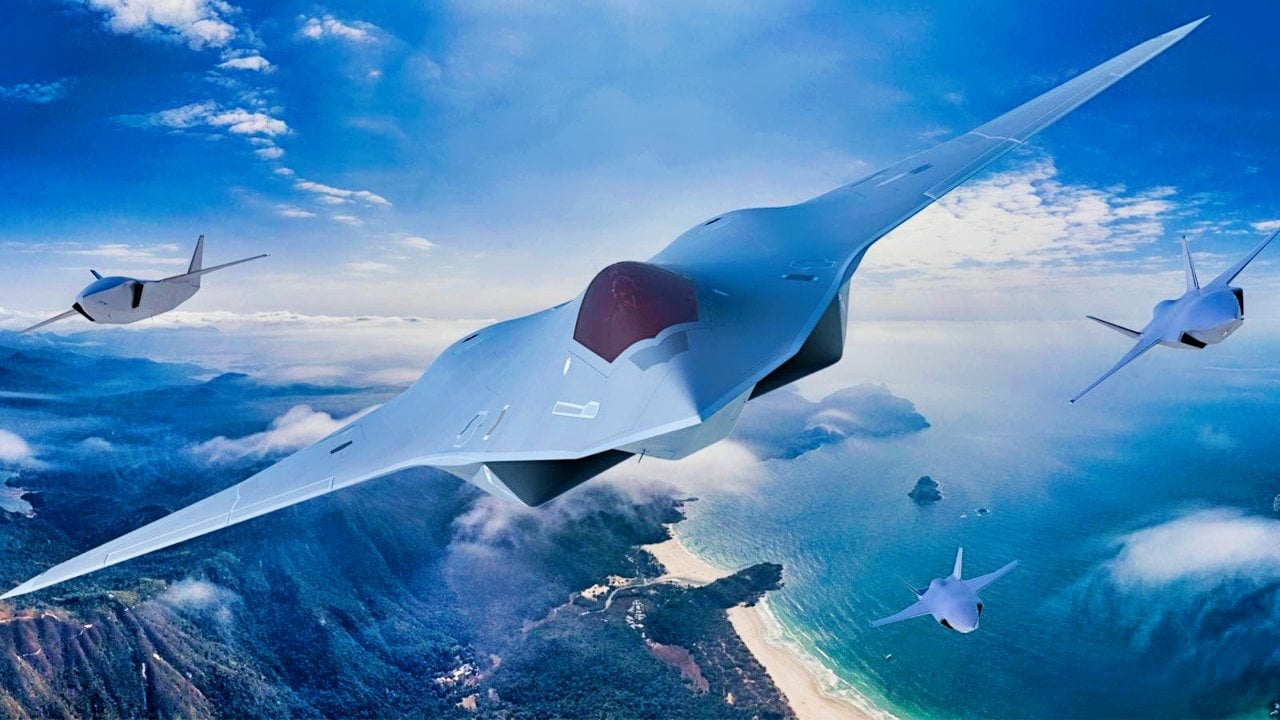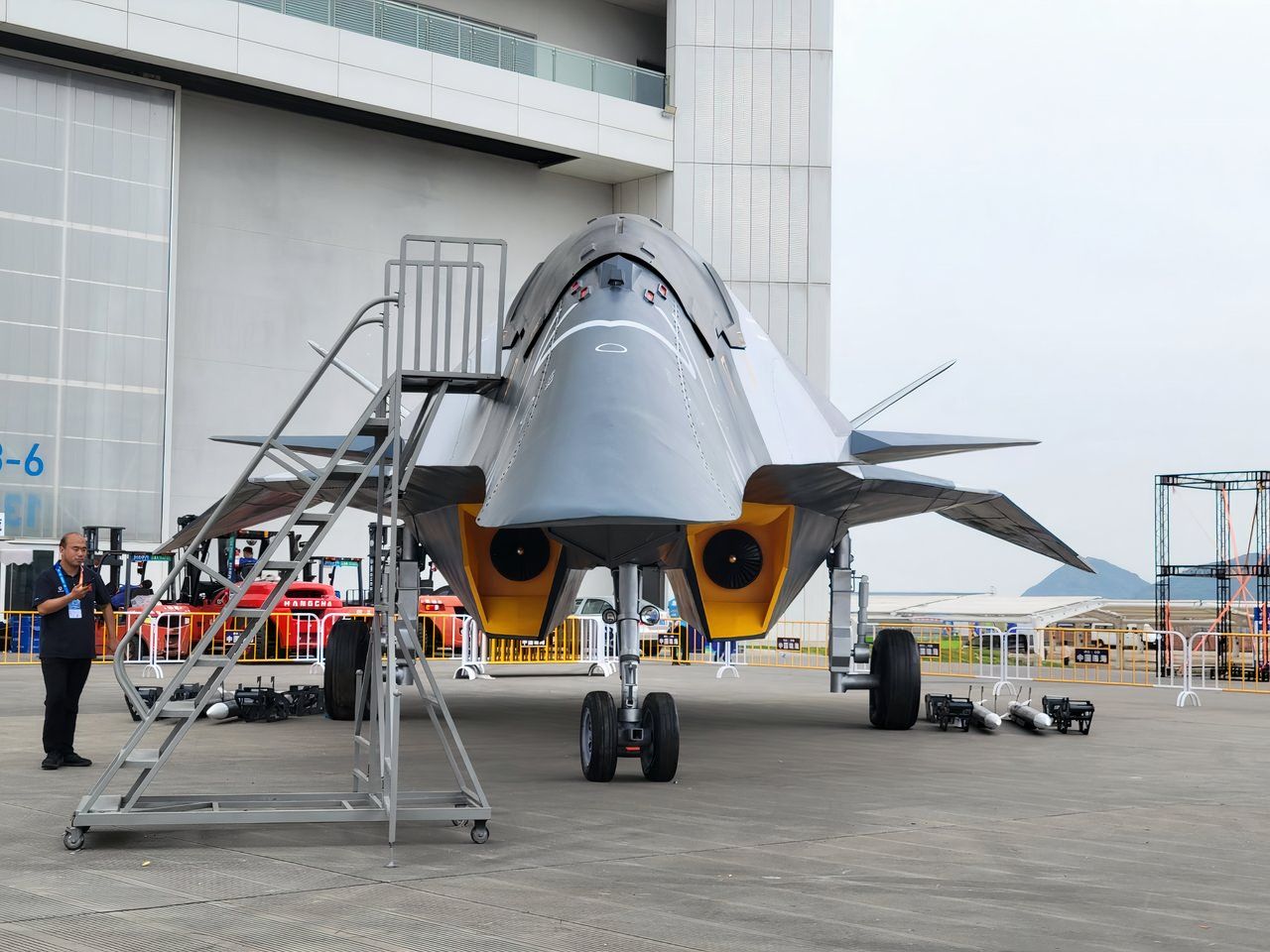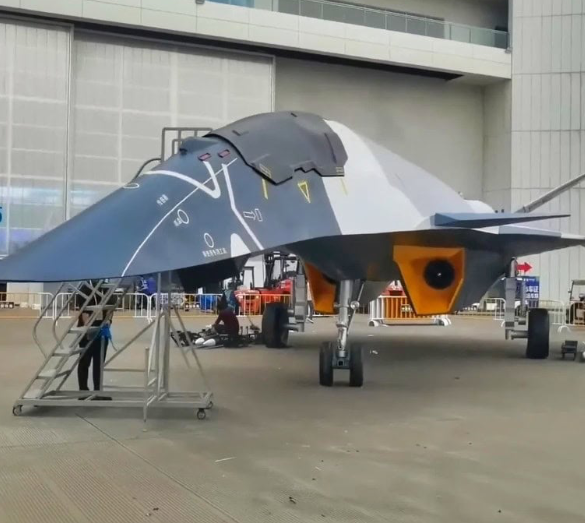AVIC Baidi
White Emperor
Gen 6
|
|||||||
|
|
|---|
.
History What To Know About China's AVIC Baidi
White Emperor
Gen 6 Fighter Jet
First flight In Future

China’s Aviation Industry Corporation (AVIC) recently showcased its Baidi White Emperor "B Type" 6th Generation Fighter Jet concept. Displayed as a symbol of China’s rising aerospace technology capabilities in the domestic defense industry, it was developed under the "Nantianmen Project," this fighter combines stealth, artificial intelligence (AI), advanced weapons, and hypersonic capabilities, potentially heralding a new era in air and space warfare. Key features that appear or have been stated as features on the Baidi White Emperor include autonomous functions (optionally manned), advanced electronic warfare (EW) capabilities, and compatibility with networked (data-link) warfare.
-
Development
Design and Technological Features
The Baidi White Emperor's design was supposedly conceived as a profile that optimizes stealth and combat agility, focusing on high-speed, maneuverable operations through advanced thrust-vectoring engines and a restructured fuselage. These engines are intended to enhance the aircraft's performance and theoretically achieve super-maneuverability akin to what the F-22 Raptor. Extremely rapid directional shifts are essential for evading enemy fire and counterattacks in a shooting war between adversaries armed with fifth generation fighter or sixth-generation fighter aircraft. Also claimed to be designed with an extended magazine capacity, the fighter's internal weapons would theoretically house various munitions for various mission profiles.
AVIC’s inclusion of directed-energy weapons, i.e. Lasers, is likely intended to show a simultaneous multi-targeting capability, further exemplifying next-generation combat functionalities. According to a report that claimed they successfuly held test flights, from China Arms - “AVIC has reimagined the Baidi as a platform that may engage in air-to-air, air-to-ground, and near-space missions."
0
KmCeiling
0
KmMAX RANGE
0
machAircraft Speed
0
Max Crew
Photo Gallery
What To Know About China's AVIC Baidi White Emperor
Gen 6 Fighter Jet
First flight In Future
.
History What To Know About China's AVIC Baidi
White Emperor
Gen 6 Fighter Jet
First flight In Future
.png)
Looking to the Future
Will the White Emperor be the world’s first operational sixth-generation fighter?
Possibly.
The capabilities of the airframe have not been confirmed, although if looks are any indication, she certainly appears capable. Regardless, the White Emperor’s reveal reinforces the notion that China is ambitiously working to augment its military equipment. The White Emperor is undoubtedly a response to American efforts to field a sixth-generation fighter, the Next Generation Air Dominance (NGAD) program.
But whereas the Chinese have a White Emperor mock-up on display, the NGAD program has been paused entirely, citing cost concerns. The NGAD was slated to cost about $300 million per airframe, prompting designers to explore cost-cutting measures, which may well imperil the entire program.
Getting a first look at the White Emperor, however, may inspire the Americans to renew their NGAD efforts in earnest.
-
China Reveals “White Emperor” Fighter Jet: A Game-Changer in Military Aviation?
Big news from the China International Aviation and Aerospace Exhibition: the Aviation Industry Corporation of China (AVIC) has unveiled a new jet: the Baidi, or, White Emperor. The White Emperor could be China’s attempt to field a sixth-generation fighter with the People’s Liberation Army Air Force (PLAAF).
Assessing China’s New Jet
Information about the White Emperor is limited and should be taken with a grain of salt, as the information is coming from AVIC or state-run media. However available data suggests that the new jet is an “integrated space-air fighter” capable of supersonic flight and breaking through the Earth’s atmosphere for operations in outer space. The latter claim seems dubious.
Aside from rocket-launched space planes like the Space Shuttle, the Buran, and the X-37, only the X-15 has operated beyond the Earth’s atmosphere. But the X-15 was specially designed to achieve speed and altitude records and little else.

Links to Youtube & Others
The GJ-11 is a tailless flying wing[4] with two internal weapons bays.[7][4] Stealth features include the shaping of the rear airframe around the engine exhaust[6] and serrated weapon bay doors.[7] The aircraft is powered by a single turbofan engine of unknown type, and the overall wingspan is 14 meters
What To Know About Baidi White Emperor
In 2013, production of the J-7 was terminated after the delivery of 16 F-7BGI to the Bangladesh Air Force.
Youtube Link
To date, large numbers of J-7s remain in service with multiple export customers, with PLAAF retiring the fleet in 2023.












.png)